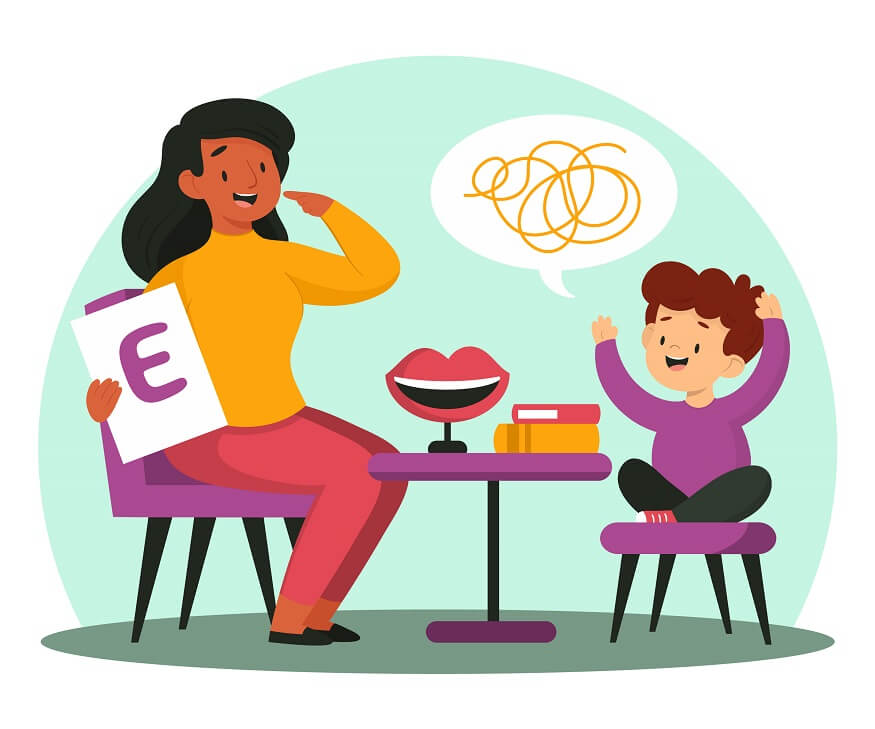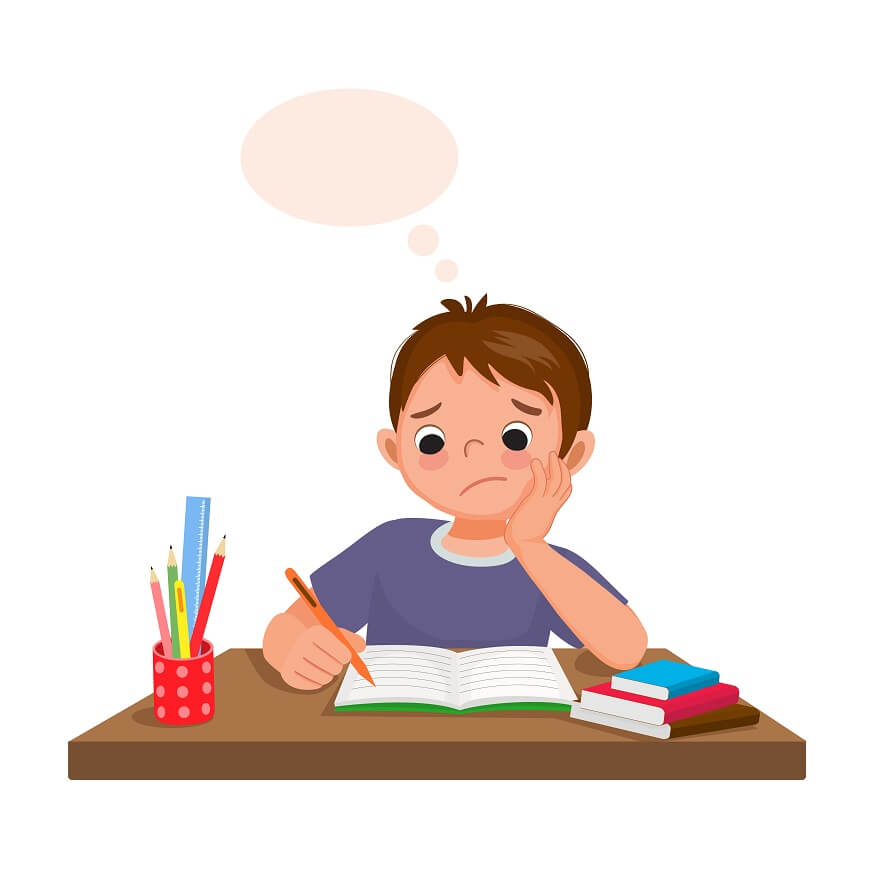You may have seen the movie Taare Zameen Par. Ishaan Awasthi, a 9-year-old boy with dyslexia and attention deficit hyperactivity disorder (ADHD), is the main character of the movie. Dyslexia is a complex condition that, although common, is often misunderstood.
This article will provide a detailed explanation of dyslexia, including a look at its definition, a list of its symptoms, and a discussion of the best cures.
Also Read: What are the factors that affect a child’s height
Dyslexia Meaning
Dyslexia is a particular type of learning disability that mostly impacts the abilities required for precise and fluid word reading and spelling.
Contrary to popular belief, dyslexia is not a symptom of insanity or laziness.
Instead, it’s a neurological difference that can significantly affect academic achievement and frequently results in challenges in typical educational settings.
People with dyslexia have normal intelligence and usually normal vision. However, their brains process language in a different way. It is a lifelong disorder that can create difficulties with reading, writing, spelling, and occasionally even speaking but has no impact on a person’s ability to grasp or comprehend complicated ideas.
The British Dyslexia Association defines dyslexia as a “learning difficulty that primarily affects the skills involved in accurate and fluent word reading and spelling.” It characteristically presents itself in childhood and continues throughout adulthood. While dyslexia clearly presents difficulties, it’s important to keep in mind that, with the correct assistance, people with dyslexia may enjoy successful and satisfying lives.
Also Read: Developing Fine Motor Skills through Fun Activities for Kindergarteners
Dyslexia Symptoms
The symptoms of dyslexia vary significantly between individuals, as everyone is unique. However, some common indicators often emerge in early childhood. Parents and educators might notice a child struggling with tasks like learning to read, spell, and write, understanding instructions, or recalling sequences like the days of the week. Here are some common symptoms of dyslexia in different age groups:
Preschool age
- Delay in speech development
- Difficulty in learning new words
- Problems remembering or naming letters, numbers and colours
- Difficulty learning nursery rhymes or playing rhyming games
School-age children
- Difficulty learning to read. Kids may read below the expected level for their age.
- Problems processing and understanding what he or she hears
- Difficulty finding the right word or forming answers to questions
- Problems remembering the sequence of things
- Difficulty seeing (and occasionally hearing) similarities and differences in letters and words
- Inability to sound out the pronunciation of an unfamiliar word
- Difficulty spelling
- Spending an unusually long time completing tasks that involve reading or writing
- Avoiding activities that involve reading
Teens and adults
- Difficulty reading, including reading aloud
- Slow and labour-intensive reading and writing
- Problems with spelling
- Avoiding activities that involve reading
- Mispronouncing names or words, or problems retrieving words
- Trouble understanding jokes or expressions that have a meaning not easily understood from the specific words (idioms), such as “piece of cake” meaning “easy”
- Spending an unusually long time completing tasks that involve reading or writing
- Difficulty summarising a story
- Difficulty learning a foreign language
It’s important to note that these symptoms can vary from person to person, and having these symptoms does not automatically mean someone has dyslexia. If you suspect you or your child might have dyslexia, it’s best to consult with a professional who can conduct a formal assessment.
Also Read: What is teenage stress? Causes, symptoms and stress management for teens
Dyslexia Treatment
Although there’s no ‘cure’ for dyslexia, it’s not something that prevents individuals from reaching their potential. There are numerous efficient interventions, methods, and modifications available to help people with dyslexia overcome their difficulties and achieve success.
Early detection and intervention are important components of dyslexia treatment.
The earlier the condition is recognised, the sooner appropriate help can be provided. Specialist teaching approaches tailored to the individual needs of the learner are crucial. These can include multi-sensory techniques, teaching phonics in a structured and systematic way, and reinforcing the link between ‘sounds’ and ‘letters.’
Dyslexia is a lifelong condition that can’t be cured. However, early intervention can provide tools and strategies to improve reading and writing skills, and adapt learning methods to individual needs. The treatments primarily focus on learning techniques to improve literacy skills, increasing the ability to read, write, and understand text. Here are some common treatment methods:
Specific Educational Interventions
Phonics-based instruction: This helps individuals understand and apply the relationship between letters and sounds. Phonics instruction improves the ability to decode words and thus increases reading accuracy and fluency.
Multi-sensory teaching: This approach links what we see, hear, touch, and do to aid in the learning process. For example, teaching letters and words by having children see the letters and words, say them out loud, listen to the sounds they make, and write them down.
Reading programs: Structured literacy programs, like the Orton-Gillingham approach or Wilson Reading System, are designed to break down reading into smaller skills, involving phonics, phonemic awareness, vocabulary development, reading fluency, and reading comprehension strategies.
Tutoring
One-on-one support can be effective, particularly when tutors are trained in multi-sensory, phonics-based programs.
Therapy
- Speech therapy: For those with issues related to language and pronunciation.
- Occupational therapy: For those with difficulties related to fine motor skills, which can affect writing.
Assistive technology
- Text-to-speech tools: Convert digital text into spoken words.
- Speech-to-text tools: Convert what someone says into text.
- Digital books and e-readers: These devices can adjust the font size and background color.
- Apps: Various apps exist for organizing thoughts, grammar assistance, and note-taking.
- Reading pens: Portable scanning devices that read words out loud.
Classroom and Testing Accommodations
- Extra time on tests
- Taking tests in a quiet room
- Using technology for tasks that involve writing
Also Read: What is Kinesthetic Learning? Meaning, Style, Examples, Activities
Caring for children with dyslexia
It is essential to foster a supportive and understanding environment for individuals with dyslexia. This includes both the classroom and the home. Dyslexics can thrive by supporting self-advocacy, cultivating their abilities, and encouraging a positive outlook.
Finally, getting psychological support can be helpful.
The difficulties of dyslexia can occasionally result in dissatisfaction, a lack of self-worth, and even worry or despair.
Therapy and counselling can promote a more positive self-view and offer crucial coping mechanisms.
Dyslexia, as a learning difficulty, can pose significant challenges. However, with the right understanding, support, and interventions, those with dyslexia can not only cope but excel. The key is to remember that dyslexia does not define an individual’s intelligence or potential. It’s merely a different way of processing language, and with the right support, individuals with dyslexia can lead rich, successful, and fulfilling lives. Understanding dyslexia is the first step towards this goal.
Also Read: What Is Learning Disability? 8 Career Options for Students with Learning Disabilities
The information provided on this website is not a substitute for professional medical advice. EuroSchool encourages you to consult with a qualified healthcare professional for any health concerns you may have. This website’s content is not meant to be used in the diagnosis, treatment, cure, or prevention of any disease.
Whatever their ability, EuroSchool is devoted to giving every kid a well-rounded education.
They work to establish an inclusive environment where all learners feel welcomed and supported because they think that all children can learn and flourish.










